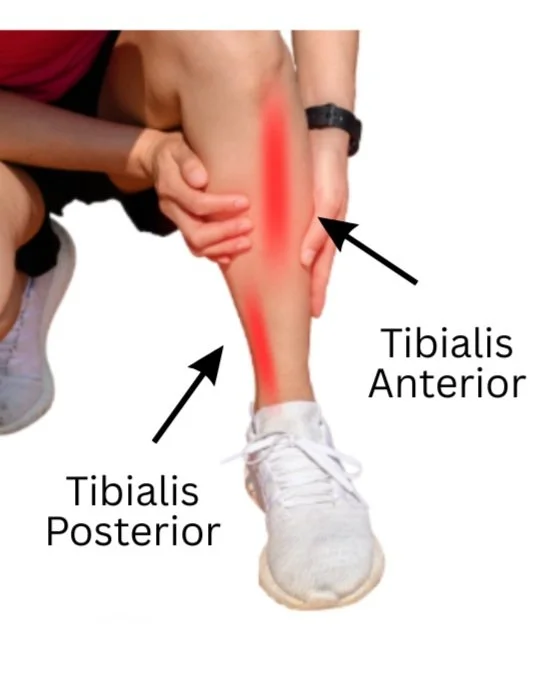How to Treat Shin Splints: Dry Needling, Electro-Acupuncture, and Recovery Tips
Struggling with shin splints from running or high-impact training? You're not alone. Shin splints—also known as medial tibial stress syndrome (MTSS)—are one of the most common lower leg injuries among runners, dancers, and athletes increasing their training too quickly.
Topics Covered:
What causes shin splints
Why runners and active individuals are more prone to them
How dry needling and electro-acupuncture can speed up healing
Recovery tips based on research and clinical experience
What Are Shin Splints?
Shin splints refer to pain along the front or inner part of your lower leg, often caused by overuse or repetitive stress. The pain is a result of small tears and inflammation in the muscles and connective tissue surrounding your tibia (shin bone).
Common causes include:
Rapid increases in running distance or speed
Training on hard, uneven, or sloped surfaces
Worn-out or unsupportive footwear
Flat feet or movement imbalances
Tight or weak lower leg muscles
These factors create excessive stress on your shinbone and the surrounding tissues—especially two key muscles: the tibialis anterior and tibialis posterior.
Muscle Imbalances That Contribute to Shin Splints
Understanding these muscles helps explain where your pain is coming from—and how targeted treatment can relieve it.
| Muscle | Location | Function | Why it matters |
|---|---|---|---|
| Tibialis Anterior | Runs down the front of your shin, just outside the tibia | Lifts your foot when you walk or run (dorsiflexion) | When overused, this muscle pulls on the shin and causes pain along the front of the leg |
| Tibialis Posterior | Deep behind the shin bone, running down behind the inner ankle | Supports the arch of your foot and controls inward foot motion | Weakness or tightness can strain the inner shin and contribute to medial tibial stress syndrome |
How Long Does It Take to Recover from Shin Splints?
Most people recover within 2 to 6 weeks with proper treatment and rest. However, if left untreated or aggravated by continued training, shin splints can linger for months or lead to more serious injuries like stress fractures.
Dry Needling & Electro-Acupuncture: Accelerating Recovery
While rest, stretching, and footwear changes are important, dry needling combined with electro-acupuncture can dramatically speed up the healing process.
How It Works:
Dry Needling: Targets the tight, overworked muscles causing strain on the shin bone. It releases trigger points and restores healthy muscle function.
Electro-Acupuncture: Delivers gentle electrical pulses to the area to reduce inflammation, stimulate bone and tissue repair, and enhance circulation deep within the lower leg.
This combo doesn't just treat the symptoms—it addresses both the muscle and bone-level dysfunction behind shin splints.
Benefits of Dry Needling + Electro-Acupuncture for Shin Splints
✔️ Reduces inflammation and pain at the source
✔️ Activates the body’s natural tissue repair response
✔️ Improves blood flow and nutrient delivery to injured tissue
✔️ Speeds up recovery time and helps prevent recurrence
Think of it as flipping your body’s internal repair switch.
What the Research Says
A 2023 randomized controlled trial showed that dry needling significantly reduced pain in athletes with shin splints—dropping average pain levels from 7 to 2 in just one treatment cycle.
Another study found that combining dry needling with electrical stimulation may further improve outcomes, especially for musculoskeletal injuries like MTSS.
Conclusion: Heal Smarter, Not Harder
Shin splints don’t have to sideline your training. By treating the root causes—muscle tension, biomechanical imbalance, and inflammation—you can get back to running, lifting, or dancing without pain.
Dry needling and electro-acupuncture are safe, effective, and research-supported treatments that help you heal faster and move better.
Ready to run stronger and pain-free? Book a session and let’s get you back on track.

